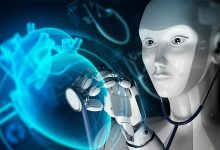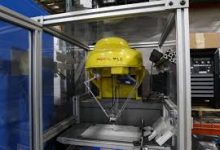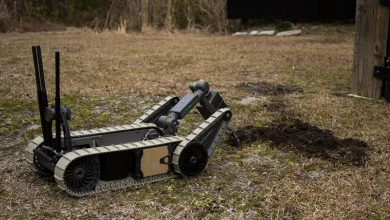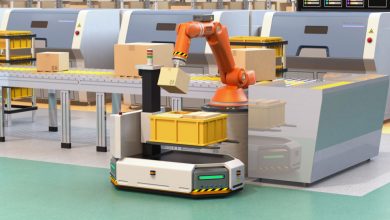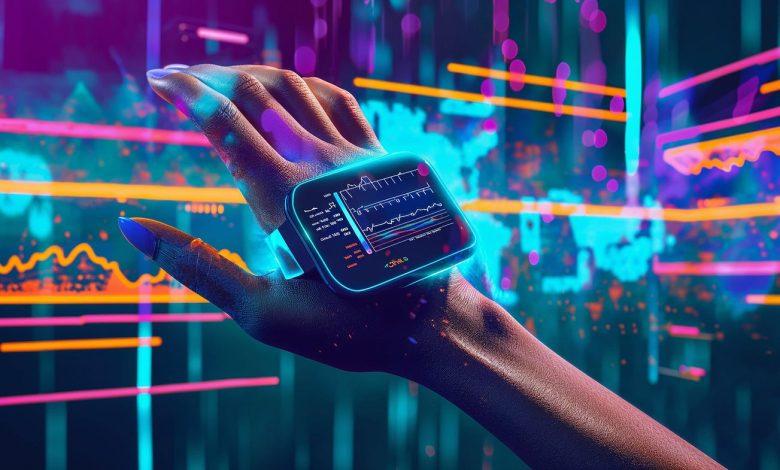
Introduction:
Activities of Daily Living (ADLs) are fundamental tasks that individuals perform on a daily basis to maintain their health, well-being, and independence. For some individuals, such as those with disabilities, injuries, or age-related limitations, performing these tasks independently can be challenging. However, with advancements in technology, particularly in the realm of assistive devices and robotics, there are now innovative solutions available to support individuals in their daily activities and promote independence. In this comprehensive exploration, we delve into the transformative role of technology in assisting with ADLs, examining its applications, benefits, and future prospects in empowering individuals to lead fulfilling and independent lives.
Understanding Activities of Daily Living:
Activities of Daily Living encompass a range of tasks that individuals typically perform as part of their daily routines to meet their basic needs and maintain their health and well-being. These tasks include personal hygiene (such as bathing, grooming, and toileting), dressing, eating, mobility, and household chores (such as cooking, cleaning, and managing finances). For individuals with disabilities, injuries, or age-related limitations, performing these tasks independently may present challenges that require support and assistance from caregivers or assistive devices.
Personal Care and Hygiene:
Assistive devices and technologies play a crucial role in supporting individuals with personal care and hygiene tasks, enabling them to maintain cleanliness, dignity, and independence in their daily routines. For example, shower chairs, bath benches, and grab bars provide stability and support for individuals with mobility impairments during bathing and showering. Similarly, adaptive grooming aids such as long-handled brushes, toothbrushes, and nail clippers enable individuals with limited dexterity or range of motion to perform grooming tasks independently. Additionally, specialized toileting aids such as raised toilet seats, commodes, and bidets assist individuals with mobility impairments or toileting difficulties in using the bathroom with greater comfort and confidence.
Personal Care and Hygiene: Enhancing Well-being Through Daily Practices
Personal care and hygiene are essential components of daily life that contribute to overall health, well-being, and social interaction. These practices encompass a wide range of activities aimed at maintaining cleanliness, grooming, and physical health. From bathing and dental care to grooming and dressing, personal care and hygiene routines play a vital role in promoting self-esteem, confidence, and social acceptance. In this comprehensive exploration, we delve into the importance of personal care and hygiene, examining the various aspects, benefits, and best practices associated with these essential daily routines.
Understanding Personal Care and Hygiene:
Personal care and hygiene refer to the set of practices and activities individuals undertake to maintain cleanliness, grooming, and physical health. These activities are essential for preventing the spread of illness and infection, promoting skin and oral health, and enhancing overall well-being. Personal care and hygiene routines typically include tasks such as bathing, showering, dental care, hair care, skincare, grooming, dressing, and toileting. These routines vary in complexity and frequency depending on individual preferences, cultural norms, and specific health needs.
Bathing and Showering:
Bathing and showering are fundamental aspects of personal hygiene, allowing individuals to cleanse their bodies, remove dirt and bacteria, and refresh themselves. Regular bathing helps prevent skin infections, eliminate body odor, and promote relaxation and mental well-being. Best practices for bathing and showering include using mild soap and warm water, paying attention to skin folds and creases, and drying thoroughly to prevent moisture-related skin conditions.
Dental Care:
Dental care is essential for maintaining oral health, preventing tooth decay, gum disease, and bad breath. Daily oral hygiene practices such as brushing teeth, flossing, and using mouthwash help remove food particles, plaque, and bacteria from the mouth, reducing the risk of dental problems. Best practices for dental care include brushing teeth twice a day with fluoride toothpaste, flossing daily to clean between teeth, and visiting the dentist regularly for check-ups and professional cleanings.
Hair Care:
Hair care involves maintaining clean, healthy hair through regular washing, conditioning, and styling. Proper hair care practices help prevent dandruff, scalp infections, and hair damage, promoting strong, shiny hair. Best practices for hair care include using a gentle shampoo and conditioner suitable for your hair type, avoiding excessive heat styling and chemical treatments, and protecting hair from sun exposure and environmental damage.
Skincare:
Skin Care is important for maintaining healthy, radiant skin and preventing skin conditions such as acne, dryness, and premature aging. Daily skincare routines typically include cleansing, moisturizing, and sun protection. Best practices for skincare include using a gentle cleanser suitable for your skin type, applying moisturizer to keep skin hydrated, and using sunscreen with SPF 30 or higher to protect against UV radiation.
Grooming:
Grooming involves maintaining a neat and well-groomed appearance through activities such as shaving, trimming, and nail care. Proper grooming practices help enhance personal hygiene and confidence, promoting a positive self-image. Best practices for grooming include using sharp, clean razors for shaving, trimming nails regularly to prevent ingrown nails, and maintaining a tidy appearance by keeping hair and facial hair well-groomed.
Dressing:
Dressing involves selecting and putting on clothing appropriate for the occasion, weather, and personal style. Dressing well helps individuals feel confident and comfortable in their appearance, enhancing self-esteem and social interaction. Best practices for dressing include choosing clothing that fits well and flatters your body shape, selecting fabrics that are comfortable and breathable, and coordinating outfits to create a polished look.
Toileting:
Toileting involves using the toilet for urination and bowel movements, as well as maintaining cleanliness and hygiene in the bathroom. Proper toileting practices help prevent urinary tract infections, constipation, and other digestive issues. Best practices for toileting include using proper hygiene techniques, such as wiping from front to back, washing hands thoroughly with soap and water after using the toilet, and emptying the bladder and bowels regularly to maintain regularity.
Incontinence Care:
Incontinence care involves managing bladder or bowel control difficulties, such as urinary or fecal incontinence. Proper incontinence care practices help maintain dignity, comfort, and skin integrity for individuals experiencing incontinence. Best practices for incontinence care include using absorbent products such as adult diapers or pads, practicing good perineal hygiene to prevent skin irritation, and seeking medical advice for underlying health issues contributing to incontinence.
Promoting Independence:
Promoting independence in personal care and hygiene is essential for individuals’ overall well-being and quality of life. Encouraging autonomy and self-care skills helps individuals develop confidence, self-esteem, and a sense of control over their lives. Caregivers and support professionals can facilitate independence by providing appropriate assistance, encouragement, and adaptive equipment as needed, while also respecting individuals’ preferences and privacy.
In conclusion,
Personal care and hygiene are essential aspects of daily life that contribute to physical health, mental well-being, and social interaction. By incorporating best practices and utilizing appropriate tools and technologies, individuals can maintain cleanliness, grooming, and personal hygiene effectively. Promoting independence and autonomy in personal care and hygiene fosters self-confidence, dignity, and quality of life, empowering individuals to lead fulfilling and meaningful lives.
Dressing and Clothing Assistance:
Assistive devices and technologies assist individuals with dressing and clothing tasks, enabling them to select, put on, and fasten clothing items independently. For example, dressing aids such as button hooks, zipper pulls, and elastic shoelaces assist individuals with limited dexterity or hand strength in manipulating fasteners and closures on clothing items. Similarly, adaptive clothing with features such as Velcro closures, magnetic snaps, and elastic waistbands offers convenience and ease of use for individuals with mobility impairments or arthritis. Additionally, dressing and clothing assistance robots equipped with robotic arms and computer vision systems can assist individuals with dressing tasks, providing support and guidance as needed.
Dressing and Clothing Assistance: Fostering Independence and Personal Expression
Dressing and clothing assistance play a significant role in maintaining personal hygiene, comfort, and self-expression. These activities involve selecting appropriate clothing, putting on garments, and fastening closures, which may pose challenges for individuals with disabilities, injuries, or mobility limitations. However, with the right tools, techniques, and support, individuals can achieve independence and confidence in their dressing routines. In this detailed exploration, we’ll delve into the importance of dressing and clothing assistance, discuss common challenges, and provide strategies and resources for overcoming them.
Understanding Dressing and Clothing Assistance:
Dressing is a multifaceted activity that involves several steps, including selecting clothing, putting on garments, fastening buttons, zippers, and closures, and adjusting clothing for comfort and fit. For individuals with physical disabilities, limited mobility, or dexterity issues, dressing independently can be challenging and may require assistance or adaptive strategies. Clothing assistance encompasses a range of techniques, tools, and devices designed to facilitate dressing and promote independence.
Seeking Professional Support:
For individuals facing significant challenges in dressing, seeking professional support from occupational therapists, physical therapists, or rehabilitation specialists can be beneficial. These professionals can assess individual needs, recommend adaptive strategies, and provide training in dressing techniques to promote independence and confidence.
In conclusion,
Dressing and clothing assistance play a vital role in promoting independence, self-esteem, and personal expression for individuals with disabilities or mobility limitations. By utilizing adaptive clothing solutions, assistive devices, and strategies tailored to individual needs, individuals can overcome challenges and achieve greater autonomy in their dressing routines. Additionally, seeking professional support and assistance when needed can further enhance independence and quality of life.
Meal Preparation and Eating:
Assistive devices and technologies facilitate meal preparation and eating tasks, enabling individuals to prepare, cook, and consume meals independently and safely. For example, adaptive kitchen tools such as ergonomic utensils, cutting boards, and jar openers assist individuals with limited hand strength or coordination in preparing ingredients and cooking meals. Similarly, meal preparation aids such as electric can openers, food processors, and microwave ovens offer convenience and efficiency for individuals with mobility impairments or fatigue. Additionally, dining aids such as adaptive plates, utensils, and drinking cups assist individuals with dexterity difficulties or tremors in eating and drinking with greater ease and control.
Meal Preparation and Eating: Nourishing the Body and Soul
Meal preparation and eating are essential aspects of daily life that go beyond mere sustenance—they are opportunities for creativity, nourishment, and social connection. From planning and cooking meals to sitting down and enjoying them, mealtime rituals play a significant role in promoting physical health, mental well-being, and cultural identity. However, for individuals with disabilities, injuries, or mobility limitations, meal preparation and eating can present unique challenges. In this comprehensive exploration, we delve into the importance of meal preparation and eating, discuss common challenges, and provide practical strategies for overcoming them.
Understanding Meal Preparation and Eating:
Meal preparation involves planning, cooking, and assembling food to create nutritious and satisfying meals. It encompasses tasks such as selecting recipes, shopping for ingredients, chopping vegetables, cooking on the stove or in the oven, and serving meals. Eating, on the other hand, involves consuming food and beverages to nourish the body and provide energy for daily activities. Both meal preparation and eating are essential for maintaining health, promoting social interaction, and fostering cultural traditions.
Promoting Independence and Autonomy:
Encouraging independence and autonomy in meal preparation and eating is essential for individuals’ overall well-being and self-esteem. Providing opportunities for individuals to participate in meal planning, cooking, and decision-making empowers them to make choices based on their preferences, dietary needs, and cultural traditions. Additionally, offering support, encouragement, and positive reinforcement can boost confidence and motivation in mastering mealtime skills.
In conclusion,
Meal preparation and eating are integral parts of daily life that contribute to physical health, mental well-being, and social connection. By implementing strategies, accommodations, and assistive technologies tailored to individual needs, individuals can overcome challenges and achieve greater independence in mealtime activities. Additionally, fostering a supportive and inclusive environment that values autonomy, choice, and cultural diversity enhances the overall mealtime experience for all.
Mobility and Transportation:
Assistive devices and technologies support individuals with mobility impairments in getting around their homes and communities safely and independently. For example, mobility aids such as walkers, canes, and wheelchairs provide support and stability for individuals with balance or walking difficulties, enabling them to navigate indoor and outdoor environments with greater confidence. Similarly, assistive transportation devices such as stairlifts, platform lifts, and wheelchair-accessible vehicles offer accessibility and convenience for individuals with mobility impairments in accessing public spaces, buildings, and transportation systems. Additionally, mobility assistance robots equipped with navigation systems and obstacle detection sensors can assist individuals with mobility impairments in navigating complex environments, providing guidance and support as needed.
Mobility and Transportation in the Modern World
In the fabric of modern civilization, mobility and transportation stand as vital arteries, pulsating with the lifeblood of societies, economies, and individuals. From the earliest footpaths trodden by our ancestors to the futuristic promise of autonomous vehicles, the evolution of mobility has been nothing short of transformative. Today, the landscape of transportation is undergoing profound changes, driven by technological advancements, environmental imperatives, urbanization trends, and shifting societal preferences.
Technological Advancements:
The 21st century has witnessed an explosion of technological innovations in transportation, reshaping how people and goods move across the globe. The emergence of electric vehicles (EVs), powered by clean energy sources, represents a paradigm shift away from traditional internal combustion engines, promising reduced emissions and a sustainable future. Additionally, the integration of smart technologies, such as GPS navigation, real-time traffic monitoring, and ride-sharing platforms, has optimized transportation efficiency, alleviated congestion, and enhanced user experience.
Moreover, the advent of autonomous vehicles (AVs) heralds a new era of mobility, where machines assume the role of drivers, potentially revolutionizing urban transportation systems, improving safety, and transforming the concept of car ownership. Meanwhile, the burgeoning field of hyperloop technology promises ultra-fast, energy-efficient modes of intercity travel, challenging the dominance of conventional rail and air transport.
Environmental Imperatives:
As concerns over climate change escalate, transportation has come under scrutiny for its significant contribution to greenhouse gas emissions and air pollution. In response, governments, industries, and consumers are increasingly prioritizing sustainable mobility solutions. The transition to electric and hybrid vehicles, coupled with the expansion of public transportation networks and cycling infrastructure, aims to mitigate environmental impacts while fostering cleaner, greener cities.
Furthermore, initiatives such as car-sharing schemes, congestion pricing, and urban planning strategies that promote mixed land-use development and walkability seek to reduce reliance on private automobiles, curbing emissions and fostering a more sustainable urban mobility ecosystem. Additionally, the electrification of public transit fleets and the integration of renewable energy sources into transportation infrastructure contribute to the decarbonization of the sector, aligning with global efforts to combat climate change.
Urbanization Trends:
Rapid urbanization poses both challenges and opportunities for transportation systems worldwide. As more people flock to cities in search of economic opportunities and improved quality of life, urban centers grapple with congestion, pollution, and inadequate infrastructure. To address these issues, cities are embracing innovative approaches to mobility, including bus rapid transit (BRT) systems, pedestrian-friendly urban design, and the promotion of micro mobility options such as electric scooters and bike-sharing programs.
Furthermore, the concept of “mobility as a service” (MaaS) is gaining traction, offering integrated, multi-modal transportation solutions tailored to individual needs. By leveraging digital platforms and data analytics, MaaS initiatives aim to streamline urban travel, reduce car dependency, and enhance overall mobility, accessibility and affordability. Additionally, urban planners are exploring concepts like transit-oriented development (TOD) and mobility hubs to create more sustainable, livable urban environments where transportation seamlessly integrates with land use and community needs.
Shifting Societal Preferences:
Changing demographics and evolving consumer behaviors are reshaping the transportation landscape, driving demand for flexible, on-demand mobility services. Millennials and Generation Z, in particular, exhibit preferences for shared, sustainable transportation options over traditional car ownership. This shift in mindset has spurred the rise of ride-hailing services, car-sharing platforms, and micro-transit solutions, catering to the needs of a digitally savvy, urban-dwelling populace seeking convenience and affordability.
Furthermore, the COVID-19 pandemic has catalyzed transformations in transportation patterns, with remote work arrangements, telecommuting, and e-commerce fueling shifts away from traditional commuting and brick-and-mortar retail. As societies adapt to the realities of a post-pandemic world, transportation stakeholders are reevaluating infrastructure investments, service delivery models, and mobility policies to accommodate evolving societal needs and preferences.
Shifting Societal Preferences: Navigating the Evolution of Values and Behaviors
Societal preferences are dynamic, constantly evolving in response to cultural, economic, technological, and environmental influences. From lifestyle choices and consumption habits to political ideologies and interpersonal relationships, these preferences shape the fabric of our societies, driving trends and shaping the trajectory of human civilization. In recent years, several key shifts in societal preferences have emerged, reflecting changing attitudes, values, and priorities across various domains. Exploring these shifts offers insights into the complex interplay of factors driving social change in the contemporary world.
Sustainability and Environmental Consciousness:
One of the most notable shifts in societal preferences revolves around sustainability and environmental consciousness. Concerns about climate change, pollution, and resource depletion have catalyzed a growing awareness of humanity’s impact on the planet. Consequently, there has been a surge in demand for eco-friendly products and services, as consumers seek to minimize their ecological footprint and support businesses that prioritize environmental stewardship.
From the rise of the zero-waste movement and the popularity of plant-based diets to the adoption of renewable energy sources and the embrace of circular economy principles, sustainability has become a guiding principle for many individuals and organizations. This shift reflects a broader recognition of the interconnectedness of human activities and the natural world, driving efforts to promote more responsible consumption and production patterns.
Digitalization and Technological Integration:
The advent of the digital age has transformed virtually every aspect of human life, reshaping how we communicate, work, learn, and interact with the world around us. As technology continues to advance at a rapid pace, societal preferences have shifted towards greater digitalization and technological integration across various domains. From the proliferation of smartphones and social media platforms to the adoption of artificial intelligence and the Internet of Things (IoT), digital technologies have become ubiquitous in modern society, influencing how we access information, conduct business, entertain ourselves, and connect with others. This shift reflects a growing reliance on digital tools and platforms to navigate the complexities of the modern world, blurring the boundaries between physical and virtual realities.
Diversity, Inclusion, and Social Justice:
In recent years, there has been a heightened focus on diversity, inclusion, and social justice issues, as societies grapple with systemic inequalities and discrimination based on factors such as race, gender, sexuality, ethnicity, and socioeconomic status. Increasingly, individuals and organizations are advocating for greater equity, representation, and inclusivity in all spheres of life, from workplaces and educational institutions to media and public discourse. This shift reflects a broader recognition of the importance of diversity and representation in fostering innovation, creativity, and social cohesion. Moreover, it underscores a growing commitment to dismantling barriers to equality and addressing systemic injustices that perpetuate discrimination and marginalization. From grassroots movements and activism to corporate diversity initiatives and policy reforms, efforts to promote diversity and inclusion are reshaping societal norms and institutions, driving progress towards a more equitable and just world.
Health and Well-being:
The pursuit of health and well-being has emerged as a central priority for many individuals and communities, particularly in the wake of global health crises such as the COVID-19 pandemic. There is a growing recognition of the importance of physical, mental, and emotional well-being in achieving a fulfilling and balanced life.As a result, there has been a surge in interest in holistic approaches to health and wellness, encompassing practices such as mindfulness, meditation, yoga, and alternative medicine. Additionally, there is a greater emphasis on preventive healthcare, healthy eating habits, and active lifestyles, as people seek to prioritize self-care and resilience in the face of life’s challenges.
Conclusion:
In conclusion, mobility and transportation are undergoing unprecedented transformations driven by technological innovation, environmental imperatives, urbanization trends, and shifting societal preferences. As we navigate the complexities of the 21st century, the quest for sustainable, equitable, and efficient mobility solutions remains paramount. By embracing innovation, fostering collaboration, and prioritizing the needs of communities and the planet, we can chart a course towards a future where transportation serves as a catalyst for progress, connectivity, and prosperity for all.
Cognitive Support and Memory Aids:
Assistive technologies support individuals with cognitive impairments or memory difficulties in managing daily tasks and routines, enabling them to stay organized, focused, and independent. For example, electronic organizers, reminder apps, and pill dispensers assist individuals with remembering appointments, medications, and daily tasks. Similarly, smart home systems equipped with voice-controlled assistants, automated reminders, and remote monitoring capabilities offer convenience and safety for individuals with cognitive impairments or dementia. Additionally, cognitive assistance robots equipped with artificial intelligence and natural language processing capabilities can assist individuals with cognitive impairments in performing tasks, answering questions, and providing companionship and social interaction.
Financial Management and Communication:
Assistive devices and technologies support individuals with disabilities in managing their finances, communicating with others, and accessing information and services independently. For example, adaptive communication devices such as speech-generating devices, text-to-speech apps, and communication boards assist individuals with speech impairments or communication difficulties in expressing themselves and interacting with others. Similarly, assistive technology devices such as screen readers, magnifiers, and braille displays enable individuals with visual impairments to access digital content, navigate websites, and communicate online. Additionally, financial management tools such as electronic banking apps, voice-controlled assistants, and adaptive keyboards assist individuals with disabilities in managing their finances, paying bills, and conducting transactions independently.
Home Automation and Environmental Control:
Assistive technologies support individuals with disabilities in controlling their home environments, managing household appliances, and accessing entertainment and communication devices independently. For example, smart home systems equipped with voice-controlled assistants, remote-controlled switches, and automated routines offer convenience and accessibility for individuals with mobility impairments or dexterity difficulties. Similarly, environmental control systems such as environmental controllers, remote-controlled thermostats, and automated lighting systems enable individuals with disabilities to adjust room temperature, lighting, and entertainment settings to their preferences and needs. Additionally, entertainment and communication devices such as smart TVs, voice-controlled remotes, and accessible gaming consoles provide entertainment and social interaction opportunities for individuals with disabilities, promoting engagement and well-being.
In conclusion,
Assistive devices and technologies play a crucial role in supporting individuals with disabilities in performing Activities of Daily Living independently and confidently. By addressing barriers and challenges in personal care, mobility, communication, and environmental control, these technologies empower individuals to lead fulfilling and independent lives, participate fully in their communities, and pursue their goals and aspirations. As technology continues to advance, there are exciting opportunities for further innovation and development in assistive devices and technologies, shaping a more accessible, inclusive, and equitable future for all.
